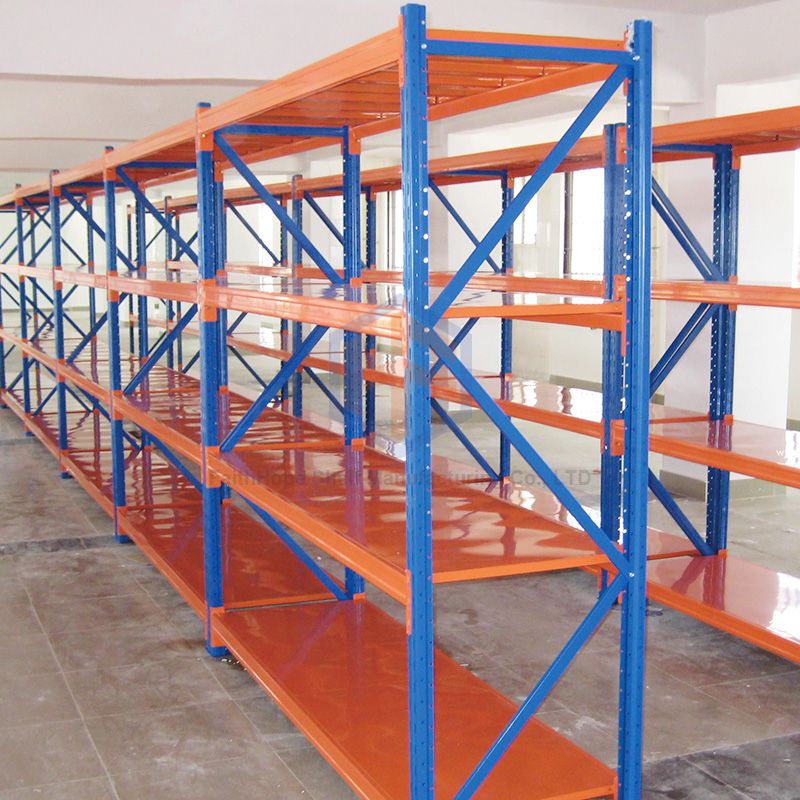Ultimate Guide to Choosing Light Duty Warehouse Racks
Faithhope Product Page
When it comes to warehouse organization, one of the most critical decisions you'll need to make is choosing the right light duty warehouse racks. These shelving units play a crucial role in keeping your inventory organized and easily accessible, so it's important to choose racks that are not only durable and efficient but also tailored to your specific needs.
In this ultimate guide, we'll walk you through everything you need to know about selecting the perfect light duty warehouse racks for your facility. From different types and materials to sizing and installation, we've got you covered.
Types of Light Duty Warehouse Racks.
There are several different types of light duty warehouse racks to choose from, each designed to serve specific purposes and accommodate different types of inventory. Some of the most common types include:
1. Boltless Shelving: Boltless shelving is a versatile and cost-effective option that doesn't require tools for assembly. These racks are easy to install and can be adjusted to accommodate different heights and configurations.
2. Wire Shelving: Wire shelving is a popular choice for warehouses that need to maximize airflow and visibility. These racks are lightweight yet durable, making them ideal for storing items that need to be easily accessible.
3. Rivet Shelving: Rivet shelving is a robust and sturdy option that can support heavy loads. These racks are easy to assemble and can be customized with additional shelves and accessories to suit your needs.
4. Steel Shelving: Steel shelving is a durable and long-lasting option that can withstand heavy use and abuse. These racks are ideal for storing bulky or heavy items that require extra support.
Materials for Light Duty Warehouse Racks.
When choosing light duty warehouse racks, it's important to consider the material used in their construction. Different materials offer varying levels of durability, weight capacity, and resistance to corrosion. Some of the most common materials used for warehouse racks include:
1. Steel: Steel is the most common material used for warehouse racks due to its strength and durability. Steel racks are capable of supporting heavy loads and are resistant to rust and corrosion.
2. Aluminum: Aluminum racks are lightweight yet sturdy, making them ideal for areas where weight is a concern. These racks are also resistant to rust, making them a great choice for damp or humid environments.
3. Plastic: Plastic racks are lightweight, easy to clean, and resistant to moisture and corrosion. These racks are a cost-effective option for storing lightweight items or in areas where hygiene is a priority.
See also:Top 10 Light Duty Warehouse Shelving Ideas
Revolutionizing Warehousing: The Future of Pallet Storage?
What is shuttle racking system?
Revolutionize Your Warehouse Efficiency with Pallet Shuttle Racking
Maximizing Efficiency: The Secret to Warehouse Shelves
Revolutionize your warehouse with innovative mold racks. What are the benefits of utilizing them?
Ultimate Guide to Shuttle Racking: Solving Your Top Storage Problems
4. Wood: Wood racks are a more traditional option that offers a rustic look and feel. While not as durable as steel or aluminum, wood racks are a good choice for storing lightweight items in a more aesthetically pleasing way.
Sizing Light Duty Warehouse Racks.
Another crucial factor to consider when choosing light duty warehouse racks is their sizing. It's important to choose racks that can accommodate your inventory without taking up too much space in your facility. Some key considerations when sizing your racks include:
1. Height: Consider the height of your warehouse space and choose racks that can be stacked vertically to make the most of your vertical storage space.
2. Depth: Ensure that your racks are deep enough to store your inventory without overhanging or sticking out, which can lead to safety hazards and inefficient use of space.
3. Width: Choose rack widths that are compatible with your inventory and aisle widths, allowing for easy access to items without obstructing pathways.
Installation of Light Duty Warehouse Racks.
Once you've selected the right light duty warehouse racks for your facility, it's important to ensure they are installed correctly to maximize their efficiency and safety. Proper installation involves:
1. Following manufacturer's instructions: Make sure to read and follow the manufacturer's guidelines for assembling and installing your racks to avoid any potential hazards or damage.
2. Securing racks to the floor: If necessary, secure your racks to the floor using proper anchoring methods to prevent tipping or collapsing.
3. Regular maintenance: Keep your racks in good condition by inspecting them regularly for signs of wear or damage and addressing any issues promptly to ensure their longevity and safety.
In conclusion, choosing the right light duty warehouse racks is essential for maintaining an organized and efficient warehouse space. By considering the different types, materials, sizing, and installation tips outlined in this ultimate guide, you can make an informed decision that meets your specific needs and maximizes the productivity of your facility. Happy racking!
The company is the world’s best heavy duty cantilever racks supplier. We are your one-stop shop for all needs. Our staff are highly-specialized and will help you find the product you need.
See also:Maximize Warehouse Efficiency with Pallet Shuttle Racking System
Transforming Your Kitchen Organization with Heavy-Duty Layered Grid Rack: Why You Need It in Your Home?
Ultimate Guide to Superlock Pallet Racks Australia
Which slotted angle iron shelving is best?
5 Key Differences Between Rack-Based and Mezzanine Floors
Maximizing Efficiency: Utilizing Superlock Pallet Racking
Which medium duty storage rack is best?









